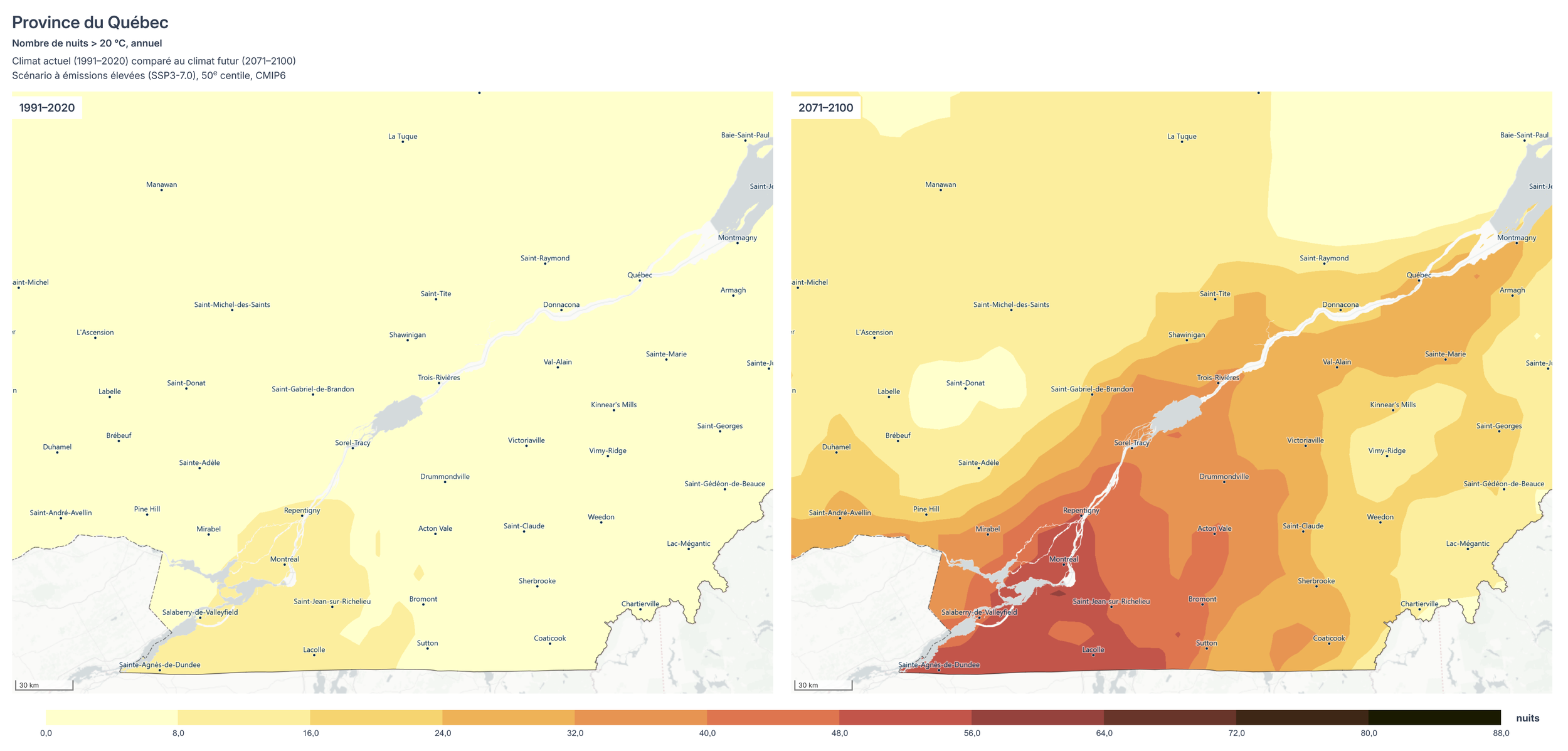What is a heat wave?
Getting hot weather in summer is totally normal. But there are times when the heat is more intense and prolonged.
We talk about heat wave when the maximum outdoor temperature reaches 31 degrees Celsius or higher and the minimum temperature (at night) stays above 18 degrees Celsius for at least 3 consecutive days (CIUSSS Estrie 2025).
Climate projections for the end of this century
The figure below shows the number of hot days (when temperature is above 30 degrees Celsius). (projections from the Ouranos’ Climate Portraits platform).
The left panel shows the average number of hot days for years 1991 to 2020. Sherbrooke normally experiences between 0 and 10 days each year during which temperatures are above 30 degrees Celsius. Projections for 2071-2100 (right panel) are 30 to 40 such hot days.
And what if it was hot at night too?
Hot nights are also a problem because the body does not get any break from the heat.
The figure below shows the number of hot nights (when temperature stays about 20 degrees Celsius at night). (Projections are from Ouranos’ Climate Portraits). The left panel shows the average for years 1991 to 2020. Sherbrooke normally experiences between 0 and 10 night with temperatures above 20 degrees Celsius. Projections for the end of the century (years 2071-2100; right panel) call for 24 to 32 such hot nights.
What could our summers feel like?
Climate changes are difficult to visualize when we only talk about numbers. To help us imagine our future summers, CBC News is providing climatic models for many Canadian cities, including Sherbrooke. You can consult their website: https://newsinteractives.cbc.ca/features/2025/climate-matches/
According to their models, Sherbrooke’s summers at the end of the century could be similar to those observe today in cities from Wisconsin or Iowa with low CO2 emissions with low CO2 emissions. So, summers that would be a little warmer than today. On the other hand, if CO2 emissions remain high, Sherbrooke’s summers at the end of the century would be similar to those of cities located 810 km further south, so much hotter than today’s!
How can we adapt to climatic changes and limit the impacts of heat waves?
Adaptation measures to reduce ambiant temperature and the dangers associated with heat are these: urban greening (the main objective behind this project), building and land use planning, creation of cool islands in cities (Ouranos, heat waves).
References
CIUSSS Estrie, 2025. Extreme heat: https://www.santeestrie.qc.ca/en/care-services/health-advice/environnement-sains-securitaires/extreme-heat
CBC News. See what summer in your city could feel like. https://newsinteractives.cbc.ca/features/2025/climate-matches/
Ouranos, 2025.Climate portaits. A renewed identity, a reinforced message. https://www.ouranos.ca/en/climate-phenomena/heat-waves-adaptation
Ouranos. Heat waves. Adaptation. https://www.ouranos.ca/en/climate-phenomena/heat-waves-adaptation


